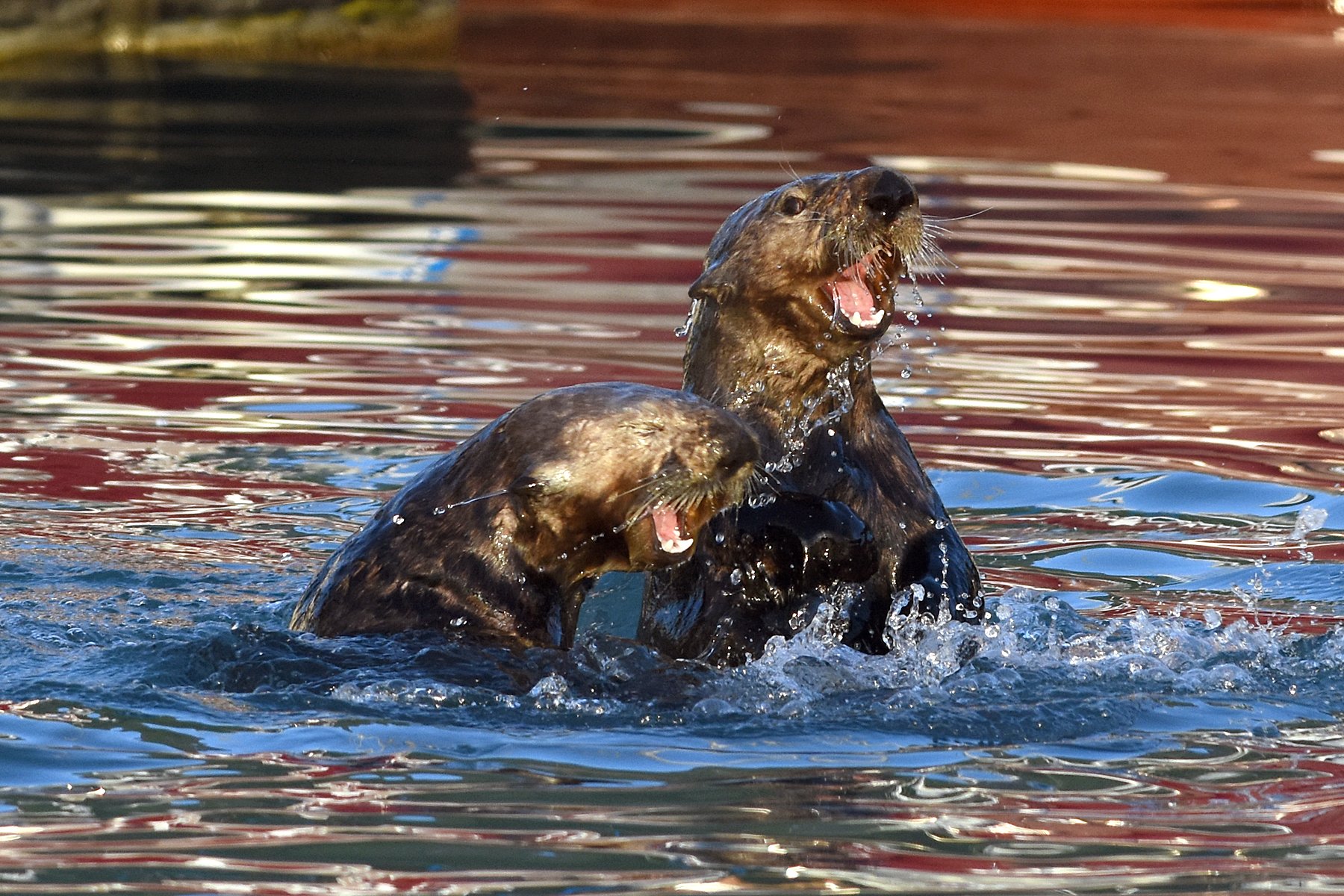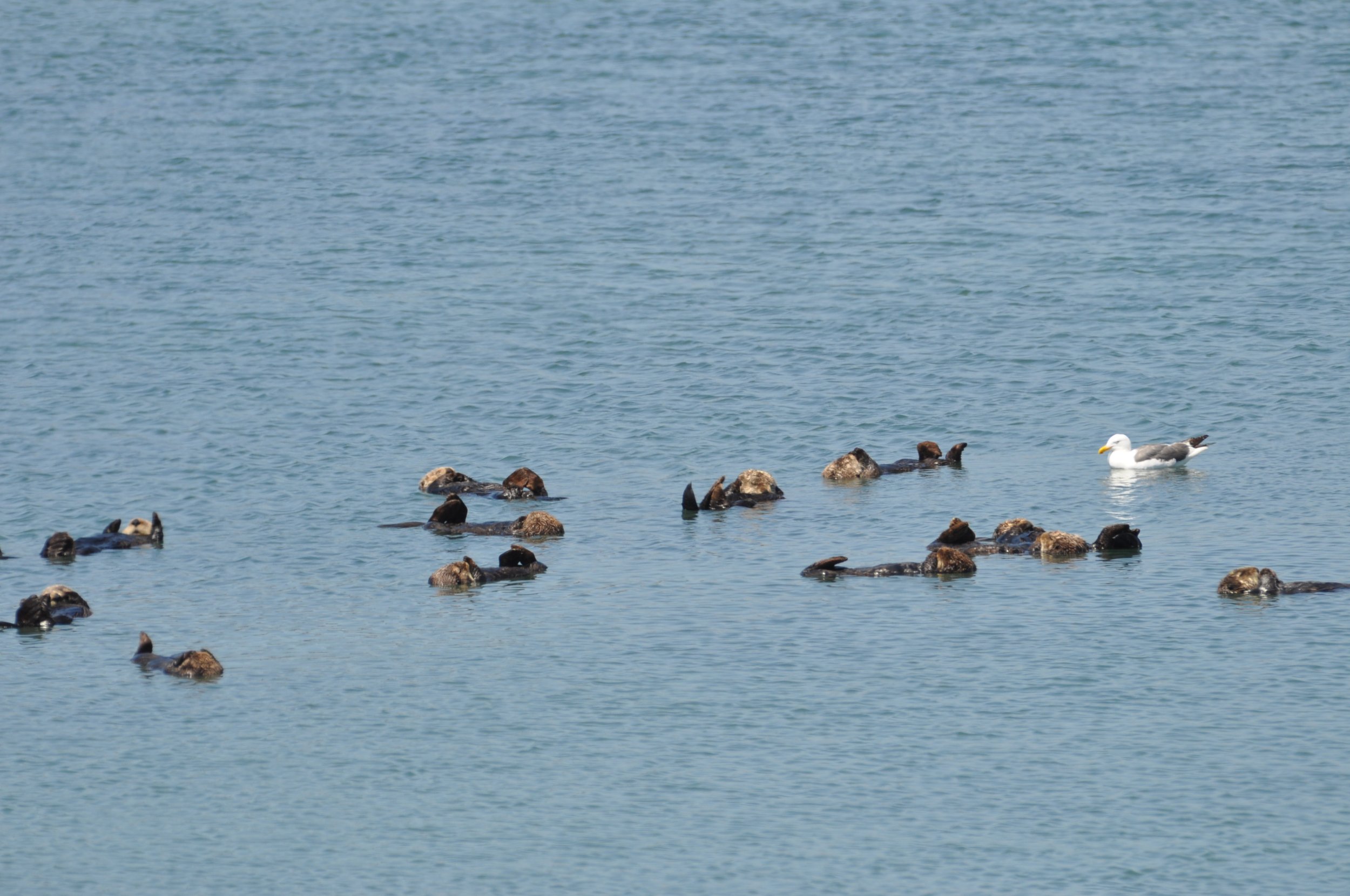Sea Otter (Enhydra lutris)

©John Pennell
QUICK GUIDE
SIZE - 1.4 metres
WEIGHT - 45kg
DIET - Abalone, clams, crabs starfish and 40 other marine animals
GESTATION - Ranges from 4-12 months (they have various degrees of delayed implantation)
OFFSPRING - 1 cub
THREAT TO SPECIES - Oil pollution, fishing nets, illegal hunting by the beginning of the last centaury the Sea Otter was nearly extinct.
CONSERVATION STATUS - Endangered
Reaching 1.4m in length, and weighing up to a whopping 45kg, for an animal that is often seen “floating around”, the Sea Otter (Enhydra lutris) certainly is not small or light! Sea otters are now found up the Kamchatka peninsula (Russia) across the Aleutian Islands to Alaska and down the west coast of Canada and into Washington. There is a separate southern population occurs off California. They are sometimes found in northern Hokkaido (Japan) having strayed down from the nearby Russian Kuril islands and small numbers have started breeding there. The current status varies throughout the range and in places such as southeast Alaska, Washington and Canada, the areas in which they are found are expanding. In Canada their status has been downgraded to a Species of Special Concern and Russia, too, is looking at downgrading the sea otter’s status.
© John Pennell
Sea Otters live in relatively cold waters of as low as -1C, and yet they do not have blubber to keep them warm. Like all otters they rely on their fur, with the Sea Otter boasting the thickest coat of all otters, and in fact of all animals full stop! Roughly 150,000 single hairs can be found in just one square cm of fur! Also, the Sea Otter is the only true marine otter, and they are able to dive to depths of around 40m to catch their prey. When they reach the surface they lay on their backs using their stomach area as a table, and a tool such as a stone is often used to help open their chosen meal’s shell. They eat a variety of food including clams, crabs, abalone, and starfish and up to 40 other marine animals.
Observations have shown that the foraging of the Sea Otter is greatest in early morning and late evening. They usually stay close to the shore in large groups but can be found up to 5km out at sea. They rest in the kelp beds in “rafts” and wrap the seaweed around themselves in order to stop the chance of them floating away. This is also the case for many people’s favourite images of these otters, with the “holding hands” pictures being shared far and wide, as we can’t resist a bit of cute sometimes!
© Tabea Lanz
© Tabea Lanz
Sea Otter breeding takes place throughout the year but peaks in births have been recognised in May and June. The gestation period for this species can be anywhere between 4 and 12 months, as they have various degrees of delayed implantation. A single fluffy cub is the usual outcome, which the mother will care for until around 13-15 months of age.
The population of the Sea Otter was once as large as 150,000–300,000 animals but, predictably enough, the sheer beauty and warmth of their fur made them a highly prized commodity and thousands were slaughtered, leaving them on the brink of extinction. The current status of the Sea Otter on the IUCN Red List is “Endangered”, and conservation efforts to get the numbers back to a healthy level are ongoing, with Alaska showing the highest current population of the species. Oil pollution and fishing nets also provide a threat to the Sea Otters well-being.
© Sea Otter Savvy
Heather Barrett of Sea Otter Savvy provided a great talk about this species for our World Otter Day 2022 Webinar, and if you haven’t already seen it, you can find it from 31 minutes 40 seconds on the following link!
Sea Otter Savvy have also just produced a guide to help people watch these wonderful animals without disturbing them, and you can find out about that by clicking the button below!





